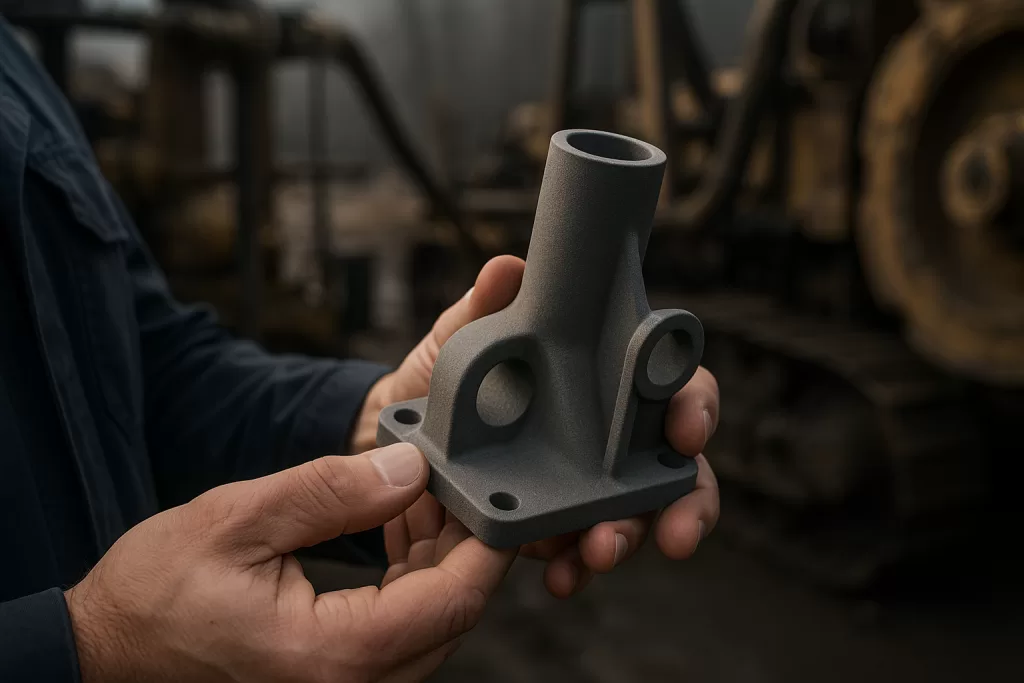
From Prototype to Production: How Custom 3D Printing Reduces Costs and Lead Times
For decades, manufacturers have been locked into a cycle of expensive tooling, long production runs, and inflexible design changes. If a company needed a new part, the process could take months and eat up a massive chunk of budget before a single usable unit rolled off the line. That reality is changing. Today, custom industrial 3D printing has matured far beyond its prototyping roots. Businesses across industries are discovering that additive manufacturing is not only faster but also more cost-effective for production-ready parts.
At Upsurge, we’ve seen this transformation firsthand. What used to take weeks or months can now be accomplished in days — with greater flexibility, lower costs, and more innovation.
IThe Bottlenecks of Traditional Production
Traditional manufacturing methods, such as injection molding and CNC machining, are powerful but come with significant constraints:
-
Tooling Costs: Building molds, dies, and fixtures requires heavy upfront investment, even for a small production run.
-
Long Lead Times: Just waiting for tooling to be produced can delay a project by weeks or months.
-
Design Lock-In: Once tooling is made, changing the design becomes expensive and time-consuming.
For businesses trying to stay agile, these barriers are costly in both money and opportunity.
IThe 3D Printing Advantage
Industrial 3D printing flips the equation. Instead of being limited by tooling, engineers can go straight from CAD file to finished part.
-
No Tooling, No Waiting: Parts are printed directly, eliminating tooling costs.
-
Rapid Iteration: If a design tweak is needed, it can be implemented immediately without expensive retooling.
-
Scalable Production: Whether you need a single component or thousands, 3D printing scales to match demand.
-
Complex Designs Made Simple: Shapes that would be impossible with traditional methods are easy to achieve, opening new possibilities for lightweighting and performance improvements.
The result?
Faster turnaround, lower upfront costs, and greater design freedom.
IReal-World Proof
In HP’s public case studies, Subaru used HP’s Multi Jet Fusion to produce concept car parts without molds — a move that significantly shortened production cycles and enabled design freedom. Other examples in the HP ecosystem suggest cost reductions of 80-90 % are achievable in polymer 3D printing workflows. Learn more.
Other industries, like medical device manufacturing, are also leveraging additive manufacturing to move from one-off prototypes to full-scale production. What used to be limited to design validation is now a core production strategy.
IUpsurge’s Role in the Shift
At Upsurge, we help businesses make this leap from prototype to production. Our team works closely with clients to:
-
Optimize designs for additive manufacturing, ensuring strength, accuracy, and efficiency.
-
Produce low- to mid-volume parts without the financial burden of tooling.
-
Streamline workflows, reducing project timelines from months to days.
-
Deliver flexibility, enabling clients to update designs without halting production.
This shift isn’t just about faster parts — it’s about empowering companies to be more innovative, competitive, and resilient.
The myth that 3D printing is “just for prototypes” is outdated.
In today’s industrial landscape, custom additive manufacturing is a proven way to cut costs, slash lead times, and unlock new levels of agility.
At Upsurge3D, we’re passionate about helping businesses harness that potential. Whether you’re an automotive manufacturer, a medical innovator, or a production engineer looking to streamline operations, we’re ready to bring your parts to life — faster, smarter, and more cost-effectively.
👉 Ready to move from prototype to production? Get in touch with us today and discover how we can accelerate your manufacturing.